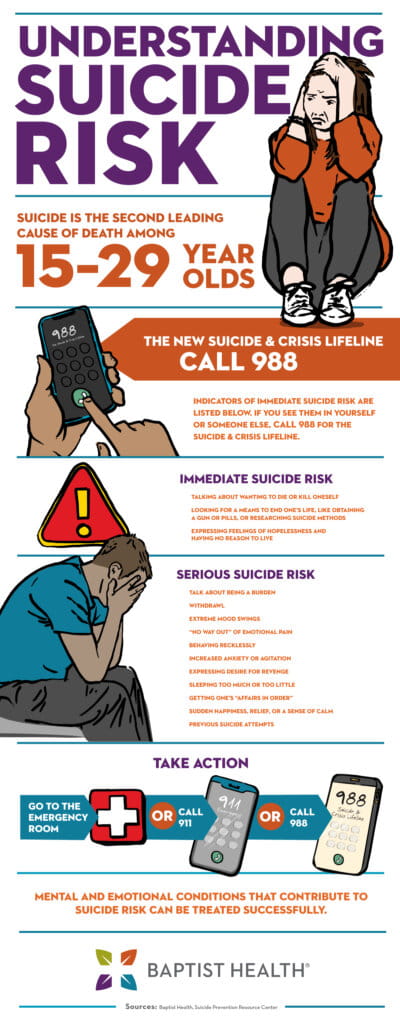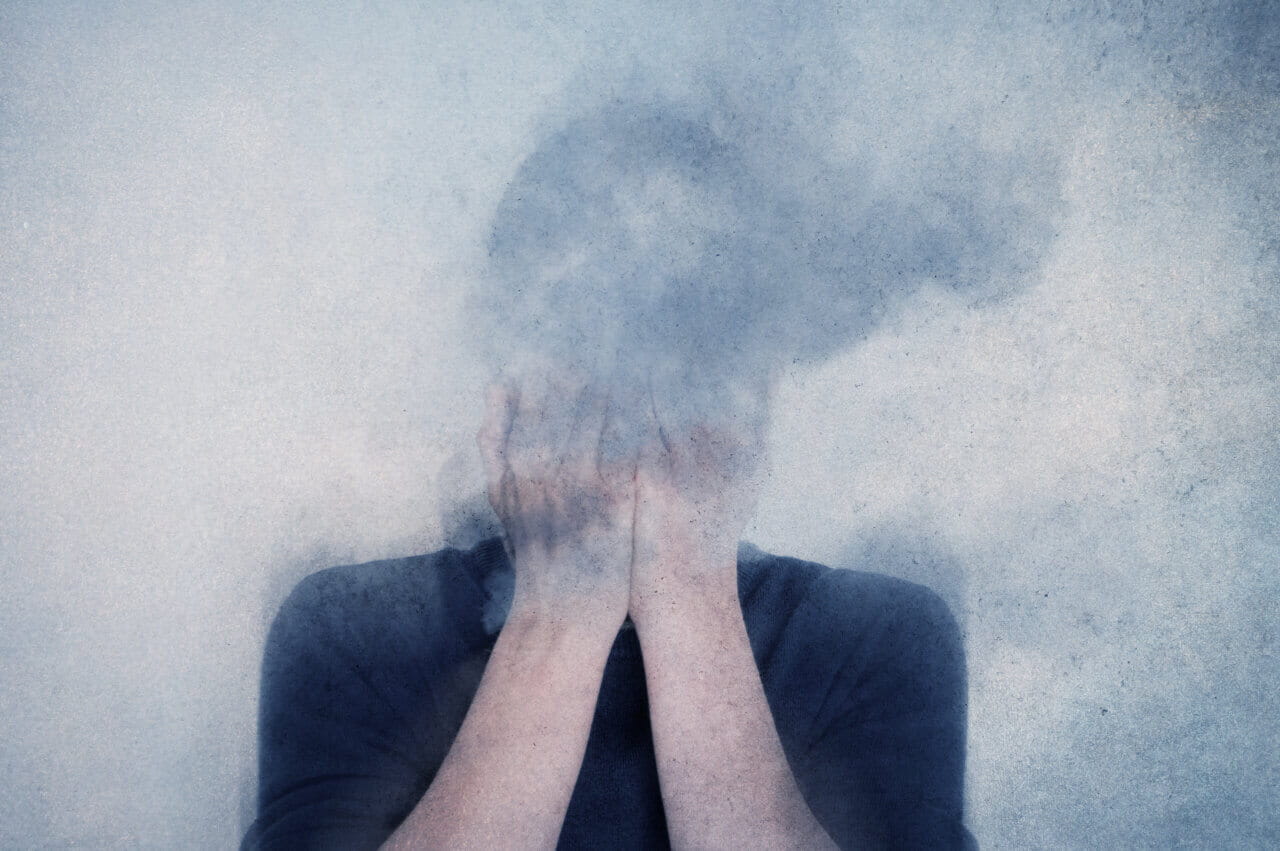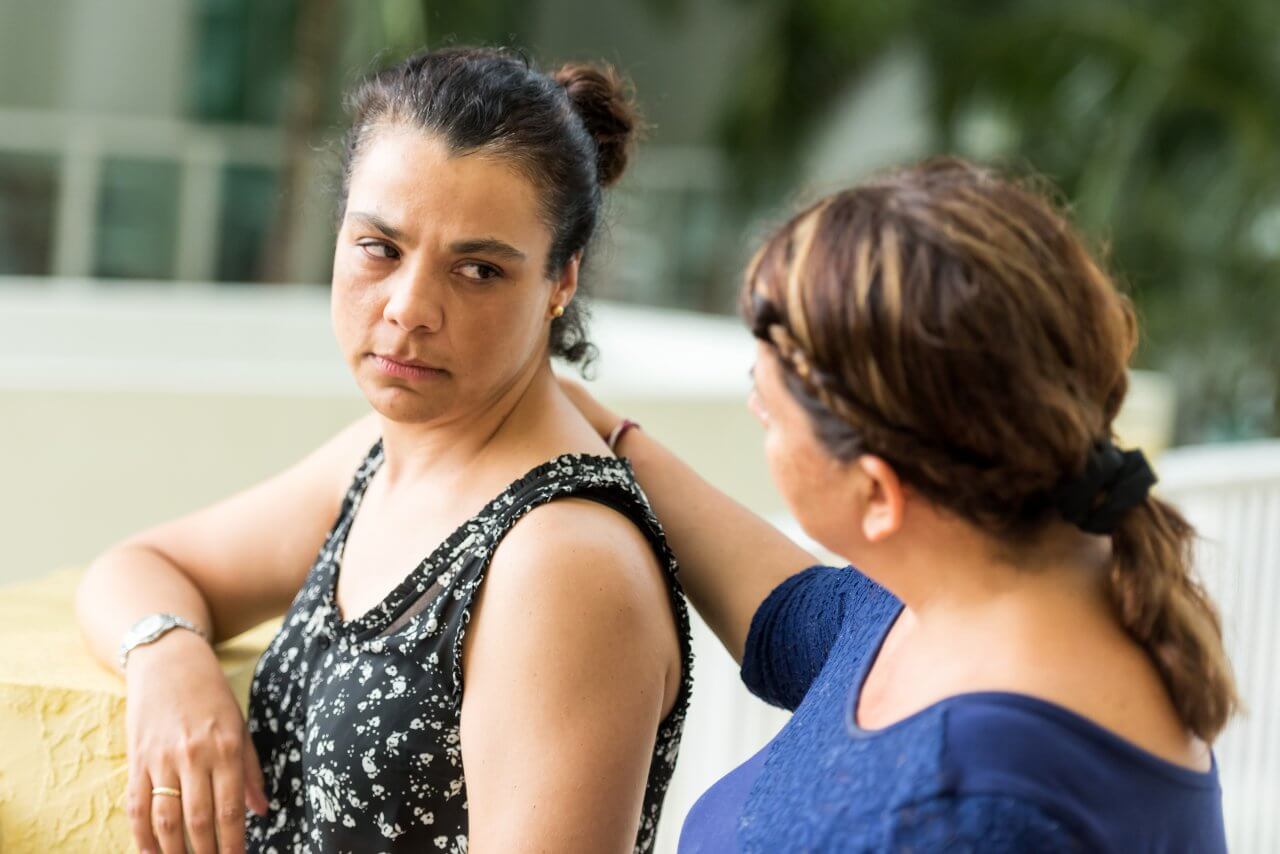Understanding Suicide Risk

Clinically reviewed by Dr. Imran Iqbal, MD.
Nearly 800,000 people die by suicide each year, according to a World Health Organization estimate. And for every death, many others attempt suicide.
People of all ages die by suicide, but it’s the second leading cause of death among those 15–29 years old. Knowing what to look for when someone is considering suicide enables you to intervene and help them get treatment. This includes seeing the signs in yourself and reaching out for help.

Suicide Warning Signs & Risk Factors
Some people attempt or die by suicide without ever exhibiting signs of the risk. However, in many instances, there are indicators of heightened risk. Seeing any signs is a reason to take action, but experts group them into “immediate risks” and “serious risks.”
Indicators of immediate suicide risk are listed below. If you see them in yourself or someone else, call 988 for the Suicide & Crisis Lifeline.
- Talking about wanting to die or kill oneself
- Looking for a means to end one’s life, like obtaining a gun or pills, or researching suicide methods
- Expressing feelings of hopelessness and having no reason to live
Signs of serious suicide risk include:
- Talking about being a burden to others
- Withdrawing from others
- Experiencing extreme mood swings
- Talking about having “no way out” of emotional pain
- Behaving recklessly, including increased use of drugs or alcohol
- Displaying increased anxiety or agitation
- Expressing a desire to get revenge
- Demonstrating extreme anger
- Sleeping too much or too little
- Taking action to “get one’s affairs in order,” such as saying goodbyes or giving possessions away
- Displaying sudden happiness, relief, or a sense of calm due to deciding to end one’s life
- Having attempted suicide previously
Take Action to Address a Potential or Imminent Suicide Attempt
If you see signs that someone may be suffering from depression or considering suicide, evidence shows that talking with them supportively and non-judgmentally can help prevent them from taking action. You shouldn’t hesitate to have the conversation due to fears that it might encourage them to carry out the act.
If you see the signs of a heightened risk of suicide, you should be prepared to take prompt action. This can include contacting an emergency medical or crisis counseling center and removing or preventing access to the means of self-harm. You should also stay with the person until they are safe.
If you or anyone you know is contemplating suicide:
- Go to the nearest emergency room
- Call 911
- Call 988 for the Suicide & Crisis Lifeline
It is vital to understand that all the mental and emotional conditions that can contribute to the risk of suicide can be treated successfully. That includes new methods and medications that are continually being developed.
Plus, in many cases, the life circumstances that may be factors in a person’s decision to end their life can also be addressed. The key is seeing the signs of an impending suicide attempt and taking action to ensure the person gets help.
It’s also helpful to address mental health issues before a crisis occurs. Learn about behavioral health services at Baptist Health.
The World Health Organization estimates that nearly 800,000 people die by suicide each year, and that for every death, many others attempt suicide. While people of all ages end their own lives, suicide is the second leading cause of death among those who are 15–29 years old. Awareness indicators that someone is considering suicide can enable you to intervene and help them get treatment. This includes seeing the signs in yourself as well.
Suicide Warning Signs & Risk Factors
While some people attempt or die by suicide without there ever being observable signs that they are considering it, in many cases, there are indicators of heightened risk. They include:
- Prior suicide attempt
- A sense of hopeless and despair
- Talking about suicide
- Social withdrawal and isolation
- Preoccupation with the idea of death
- Looking for the means to perform the act (e.g. weapons, pills, high places from which to jump, etc.)
- Feelings of worthlessness and self-loathing
- Self-destructive or reckless behavior
- Getting one’s affairs in order, such as giving away possessions and saying goodbyes to loved ones
- Sudden happiness, which results from relief or sense of calm having reached a decision to end their life
How to Respond if You See the Signs of Impending Suicide
It is recommended that if you know someone who is exhibiting these behaviors or traits, you should talk with them. Some people worry that addressing the subject might encourage the person to carry out the act. However, evidence shows that talking with the person supportively and non-judgmentally can assist in preventing them from taking action.
Also, if you see the signs of a heightened risk of suicide, you should be prepared to take prompt action such as contacting an emergency medical or crisis counseling center and removing or preventing access to the means of self-harm. You should also stay with the person until you are sure they are safe.
If you or anyone you know is contemplating suicide:
- Go to the nearest emergency room
- Call 911
- Call the National Suicide Prevention Hotline at 1-800-SUICIDE (1-800-273-8255)
All of the mental and emotional conditions that can contribute to the risk of suicide can be treated. Plus, in many cases, the life circumstances that may be factors in a person’s decision to end their life can be addressed as well. The key is seeing the signs of an impending suicide attempt and taking action to ensure the person gets help.



